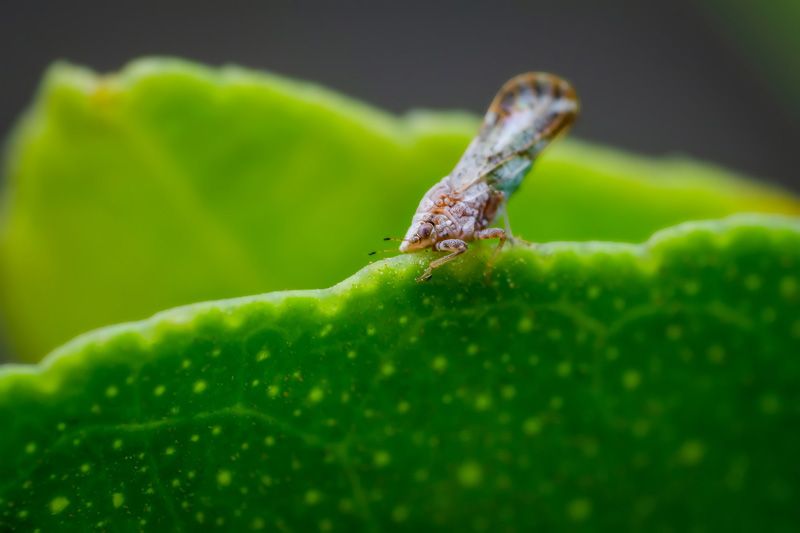
Asian Citrus Psyllid – Diaphornia citri
Asian Citrus Psyllid – Diaphornia citri
Description of Insect:
The Asian citrus psyllid (Diaphorina citri) is a small, sap-sucking insect native to Southern Asia. Adult psyllids are mottled brown with a tiny, wedge-shaped body measuring about 3-4 mm in length. They have broad, mottled forewings, featuring a brown band around the periphery of the outer half of the wings. Additionally, they produce waxy secretions that coat their bodies, making them appear dusty.
Nymphs are yellowish-orange with prominent red eyes and range in size from 1.5 to 1.7 mm. Both adults and nymphs feed on the sap of citrus plants, and their piercing-sucking mouthparts can cause direct harm to the plant.
Asian citrus psyllids are particularly known for causing huanglongbing (HLB), commonly referred to as the citrus greening disease. This bacterial infection severely damages citrus crops and is considered one of the most significant threats to the global citrus industry.
Life cycle of Asian Citrus Psyllid
The life cycle of the Asian citrus psyllid includes egg, nymph, and adult stages. Female psyllids lay almost 800 eggs during their lifetime. These tiny, elongated yellow-orange eggs are often found on the tips of new citrus shoots or the edges of young, uncurling leaves. The eggs hatch in 3-4 days under optimal conditions and give rise to nymphs.
Nymphs go through five developmental instars over the course of 12-14 days, depending on environmental factors such as temperature and food availability. After completing the nymphal stages, the psyllids emerge as winged adults, capable of dispersing to new host plants. Adults have a lifespan of a few months, producing 9 to 10 generations a year.
Damage they cause:
Asian citrus psyllids pose serious ecological, agricultural, and economic threats.
- Ecological Impact: Psyllids are highly problematic in areas where citrus crops are cultivated, such as the USA, parts of Africa, and the Mediterranean. They disrupt ecosystems by feeding on and damaging local citrus species. They produce a toxin, causing plant tips to die back and preventing the leaves from expanding normally.
- Agricultural Damage: The most significant impact of the Asian citrus psyllid is its role in spreading citrus greening disease. Once infected by the bacterium Candidatus Liberibacter species, psyllids become vectors, transmitting the disease as they feed. Infected trees suffer from blotchy mottling of the leaves, premature defoliation, stunted growth, and misshapen fruit. Over time, the disease can render entire orchards unproductive, causing devastating losses to citrus growers.
- Economic Impact: Asian citrus psyllids impose substantial financial burdens on the citrus industry. Affected growers face reduced yields and diminished fruit quality, leading to significant economic losses in regions reliant on citrus production. In Florida, the disruption in citrus production has led to the closure of almost two-thirds of processing fruit factories, resulting in a significant decline in the industry.
